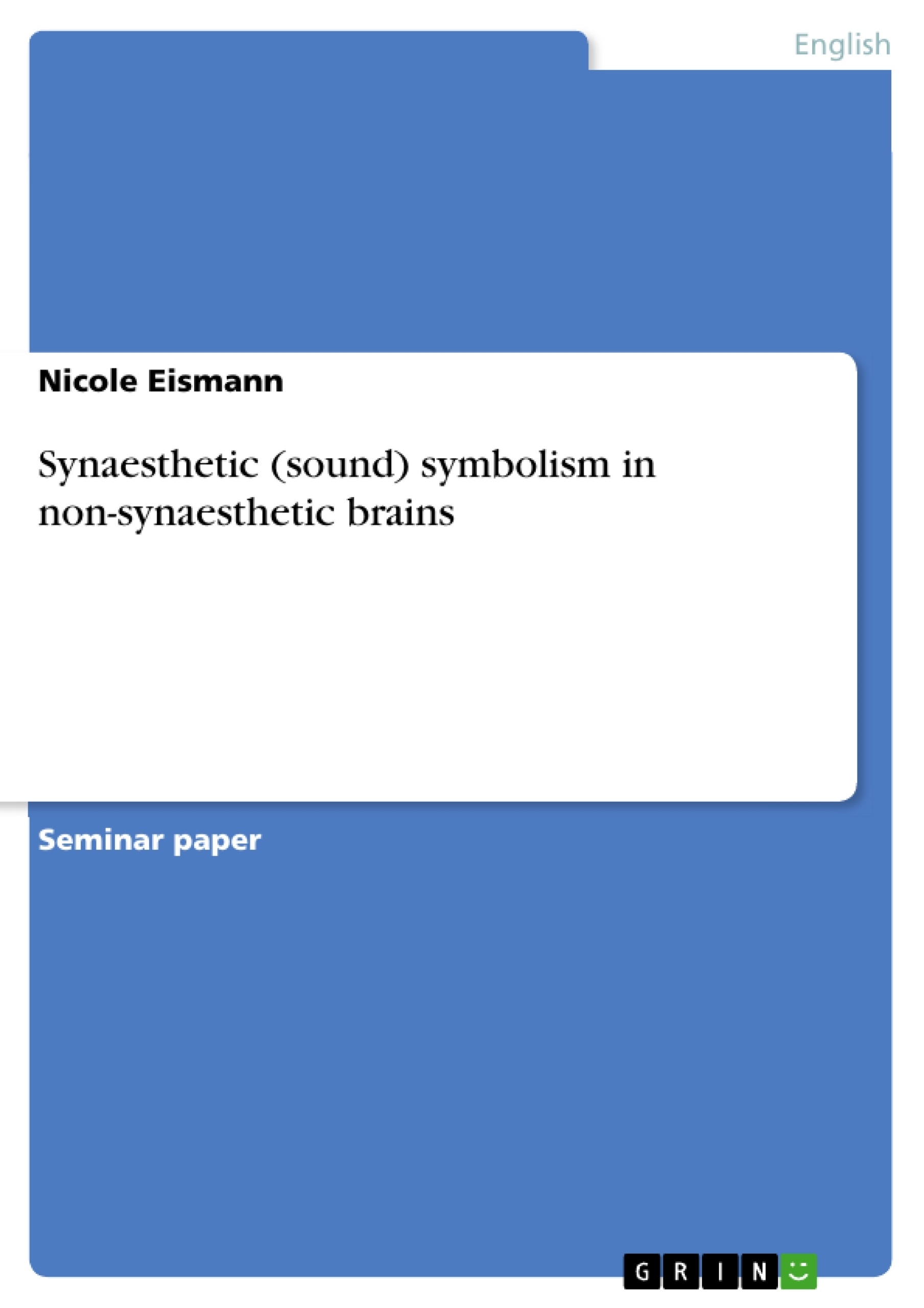As far as possible within its limitations, this paper is going to answer the question whether non-synaesthetic people are able to connect the sense of taste, the auditive, the visual and the tactile sense with each other. While most of the synaesthesia studies focus on visual stimuli like colours or graphemes, this paper is mainly concerned with the auditive sense, represented by phonemes.
However, since the visual sense is one of the most important senses for humans, and for the sake of comparability, visual stimuli in form of colours and different shapes are also included in the questionnaire. In order to give the reader a proper overview of the topic, a short literature review, which gives information about the literature that is the base of the paper, can be found in chapter 2. Subsequently, in chapter 3, one finds a description of the methodology on which the research based on: the evaluation of data taken from a questionnaire. The presentation of the results of this research follows in chapter 4 as well as a detailed discussion of these results, which can be found in chapter 5 right in front of the conclusion in chapter 6.
Everyone is aware of the fact that the sense of taste is strongly connected with the sense of smell. People, who are due to special circumstances not able to smell properly, often lose their appetite because they cannot really taste the food. But what about the other senses? Is tasting also connected with the visual or the auditive sense, or are there in general connections between other senses than smell and taste?
People in a special neurological condition called synaesthesia are able to draw these connections. Ramachandran and Hubbard describe synaesthesia as a “condition, in which an otherwise normal person experiences sensations in one modality when a second modality is stimulated” (Ramachandran/Hubbard 2001:4). This can become obvious in many different, most abstract, ways like the matching of graphemes, letters or numbers, with special colours, colours with sounds or even with (tactile) conditions. But experiments in the past, for example by Wolfgang Köhler, have shown that not only synaesthetic persons but everyone can be able to draw a couple of sensual connections inside the brain. But is this the case for any connection between randomly chosen senses or only for special ones?
Table of Contents
- Introduction
- Literature Review
- Methodology
- Results
- Findings for the phonetic-based part of the survey
- Findings for the colour assessment
- Discussion
- Discussion of the phonetic-based results
- Discussion of the results for colour perception
- Conclusion
Objectives and Key Themes
This paper investigates whether non-synaesthetic individuals can connect the senses of taste, hearing, sight, and touch. The study focuses on the influence of phonemes on other sensory perceptions, known as "synaesthetic sound symbolism." The research aims to determine if individuals can associate specific sounds with visual and tactile experiences.
- Synaesthetic sound symbolism: The relationship between sounds and non-acoustic phenomena like sensations.
- Phonetic iconism: The connection between specific phonetic patterns and their associated meanings.
- Cross-modal perception: The ability of the brain to link different sensory modalities.
- Individual perception: The subjective nature of sound symbolism and its variation across individuals.
- Cultural influences: The potential role of cultural factors in shaping sound symbolism.
Chapter Summaries
The introduction presents the concept of synaesthesia and its relevance to the study. It outlines the research question and the paper's structure.
Chapter 2 reviews existing literature on synaesthetic sound symbolism, focusing on the connection between specific phonemes and their associated sensations. It discusses the role of vowels and consonants in conveying meaning and explores the concept of phonetic iconism.
Chapter 3 details the methodology used in the research, outlining the questionnaire design and the selection of participants.
Chapter 4 presents the results of the study, analyzing the data collected from the questionnaire. It examines the findings for both the phonetic-based and color assessment portions of the survey.
Keywords
Synaesthesia, sound symbolism, phonetic iconism, cross-modal perception, individual perception, cultural influences, questionnaire, research, phonemes, vowels, consonants.
- Citation du texte
- BA Nicole Eismann (Auteur), 2014, Synaesthetic (sound) symbolism in non-synaesthetic brains, Munich, GRIN Verlag, https://www.grin.com/document/319140



